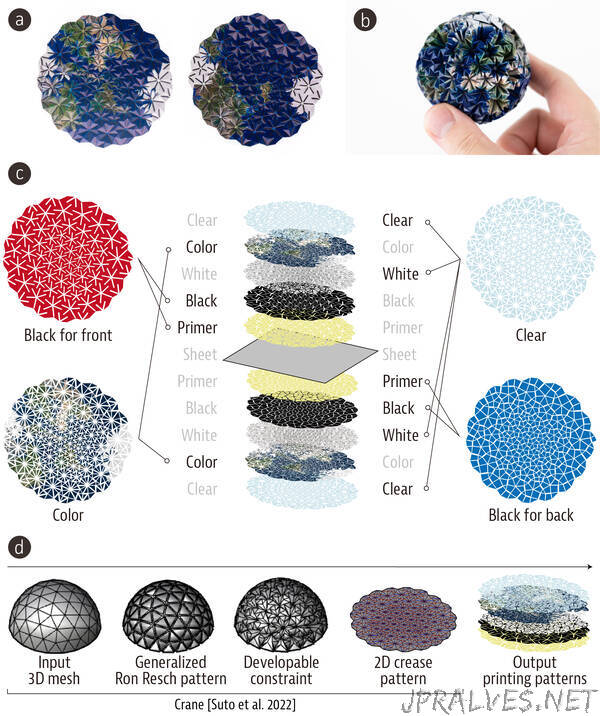
“3D printing of complex objects typically takes a long time due to the printing process necessarily laying down a large number of 2D layers to build up the object. The process usually wastes a lot of material required to support the unfinished object. Some novel ways to make flat materials self-fold into 3D shapes exist, but have shortcomings. For the first time, researchers combined 2D printing, origami, and chemistry to create a method of rapid 3D object fabrication without creating any waste material. These shapes self-fold in seconds.
“My team and I discovered how to use accessible tools and materials to create self-folding 4D objects,” said Project Assistant Professor Koya Narumi from the Department of Electrical Engineering and Information Systems at the University of Tokyo. “Essentially, we’re creating flat sheets with origami patterns on them, and these patterns can be complex, taking even a skilled origami artist hours to form. But thanks to our special process, you can pour hot water over these flat sheets and watch as they spring into complex 3D shapes in a matter of seconds.”
The technique utilizes a special kind of inkjet printer made for printing with UV-reactive materials — although the machine itself can cost tens of thousands of dollars, they are often found within maker communities and shared workshops. This printer prints a 2D origami design onto both sides of a plastic sheet that shrinks with heat. The ink it uses doesn’t shrink and can stay flexible when dry. As the base sheet shrinks when heated and the ink resists the shrinking, by leaving gaps between sections of ink on one side or the other, the designer can control which way a certain section of the sheet folds. Hot water is used to apply heat across the flat sheet so that it spontaneously folds into an intricate origami construction.
“Our biggest challenge was refining the options for hardware and materials, which took over a year to narrow it down to the final choices,” said Narumi. “But all the trial and error was worth it; compared to previous research around this same basic idea, we’ve improved the output resolution by 1,200 times, meaning the designs we can create are not just novelties, but can be used for real applications. In the future, we may explore functional materials, such as conductive or magnetic inks, that could allow for machines and other functional devices.”
Papers
Koya Narumi, Kazuki Koyama, Kai Suto, Yuta Noma, Hiroki Sato, Tomohiro Tachi, Masaaki Sugimoto, Takeo Igarashi, and Yoshihiro Kawahara. (* joint first authors), “Inkjet 4D Print: Self-folding Tessellated Origami Objects by Inkjet UV Printing,” ACM Transactions on Graphics: July 24, 2023, doi:10.1145/3592409 .”
